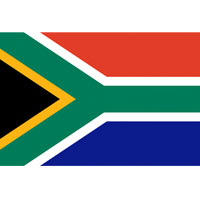South Africa sets out FP7 ambitions
South Africa set out its ambitions for participation in the Seventh Framework Programme (FP7) at an event celebrating South African science and technology held in Brussels on 26 April. Since South Africa and the EU signed a Science and Technology Cooperation Agreement a decade ago, South Africa has worked hard to encourage its scientists to engage in collaborations with European partners. In the Fourth and Fifth Framework Programmes, South African participation was largely confined to areas of environment, food, agriculture and biotechnology and health. However, during FP6, ESASTAP (European - South African Science and Technology Advancement Programme) was launched. Funded by the EU under FP6, and run by the South African Department of Science and Technology (DST), ESASTAP is a dedicated platform for the advancement of SA-EU partnerships. As well as providing information to researchers, the programme also offers practical help to South African scientists. For example, a seed funding instrument covers some of the costs incurred during the project proposal preparation phase, such as the cost of travel to Europe to meet with potential partners. Co-investment funding can be used to help cover the shortfalls in the funding allocations for some EU projects. 'Participation in FP6 has been enhanced by ESASTAP,' commented Mmboneni Muofhe of the country's Department of Science and Technology at the Brussels event. Thanks to ESASTAP, South African participation in EU projects has risen sharply. Under FP6, well over 100 South African partners got involved in EU projects, including initiatives in information and communication technologies (ICT), nanotechnology, aerospace and the social sciences. Now the South Africans have their sights firmly set on FP7. Their National Contact Points (NCPs) have been trained, and the ESASTAP team is keen to ensure that South Africa's participation in the new programme will be bigger than ever. 'Watch this space for our partnership in FP7,' said Mr Muofhe. 'We have learnt a lot of lessons over the last 10 years.' One of these lessons has been that all too often European researchers are unaware of South African science's excellence in a range of fields. To overcome this, the ESASTAP website now contains Summaries of Intended Participation in FP7 (SIPs) from South African scientists. 'These are summaries that tell you about specific thematic areas and tell you who is working in that area in South Africa,' explained Mr Muofhe. While FP6 saw participation expand into new subject areas, the South Africans are keen to see their researchers get involved in areas where participation remains low, such as energy, Euratom, mobility, transport, security and space. Asked what he would say to a European researcher wondering whether or not to work with South Africans, Mr Dhesigen Naidoo, Deputy Director General of the Department of Science and Technology, was clear. 'One of the factors is that we have a very good science base; it's small but it's quite excellent,' he told CORDIS News. 'The second is that we have certain attractions associated with our geographic advantage, things like biodiversity, our geographical advantage for astronomy, our palaeontology platform, that you would not find equivalents for elsewhere in the world. The third thing is that there is a huge amount of very high political support in South Africa for the development of science and technology. 'In addition to which we think we are nice people also,' he added with a smile.
Countries
South Africa



